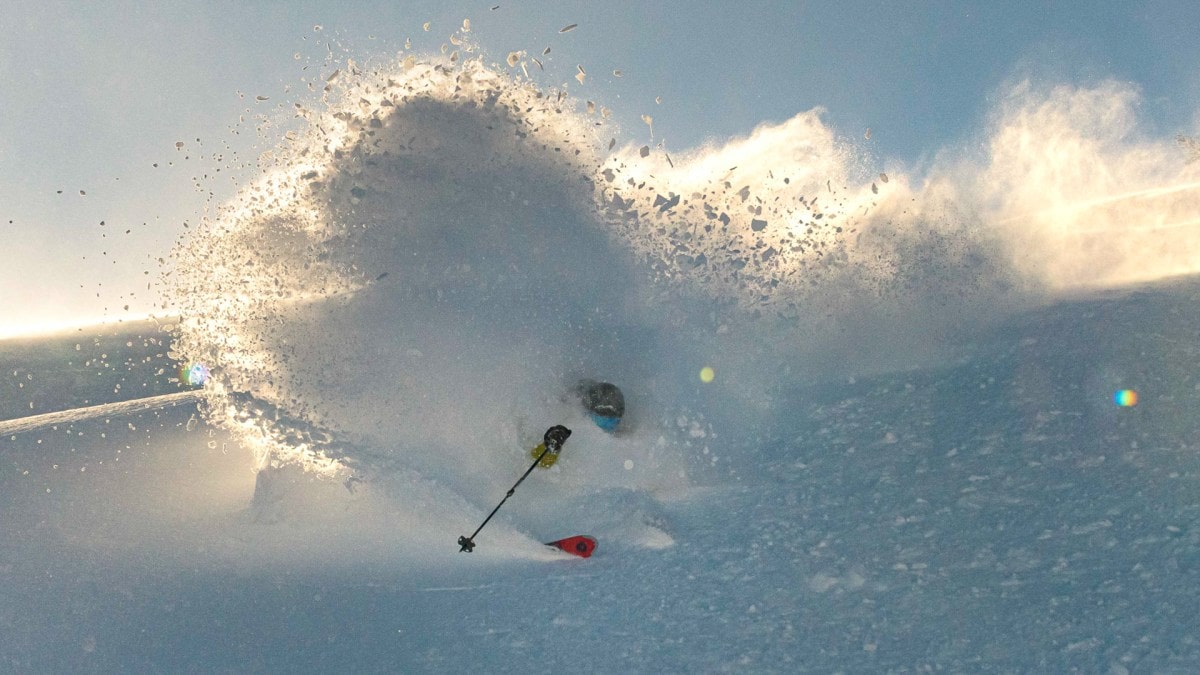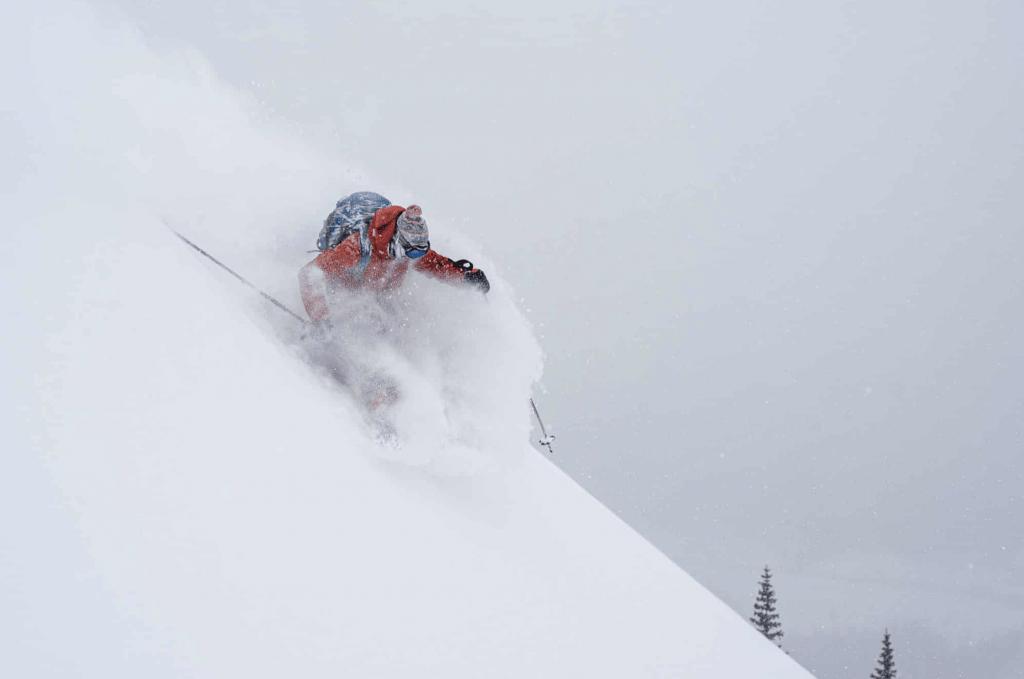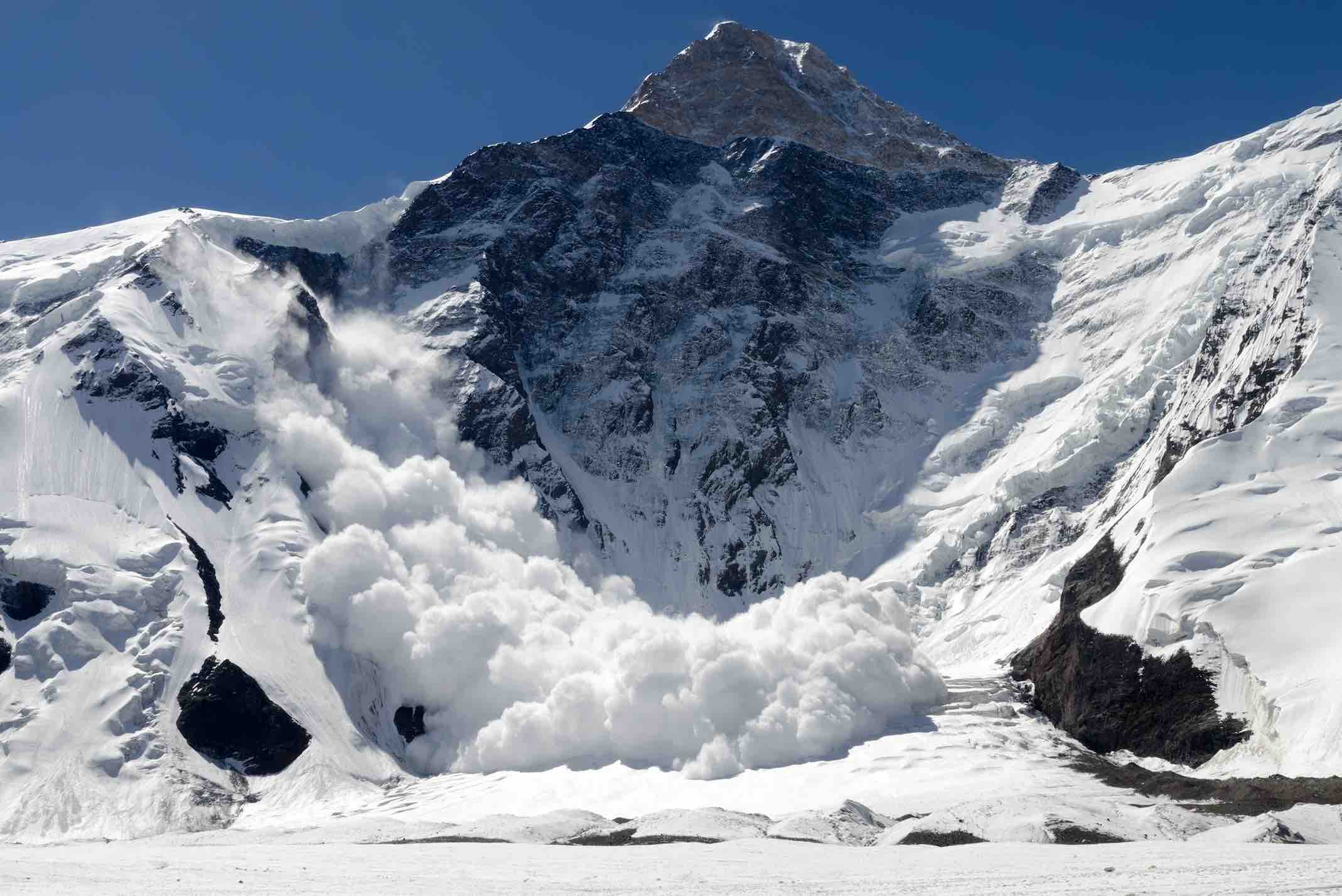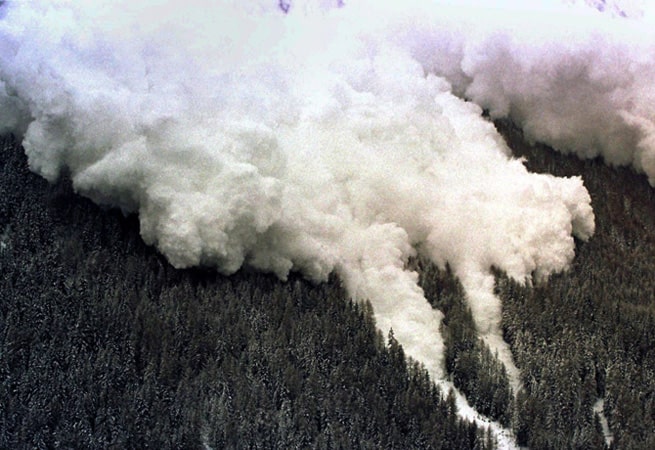
If you’ve skied blower powder or struggled through thigh-burning turns in fresh mashed potatoes, you’ve experienced SWE. SWE stands for snow water equivalent. The SWE of a particular snowfall can make for an epic powder day, a struggle through heavy snow, or even create dangerous avalanche conditions.
Basically, SWE can be thought of as the amount of water covering the ground if all of the snow melted instantaneously. SWE is calculated by multiplying the inches of fresh snow by its density. If 24” of snow falls at a density of 10%, the SWE equals 2.4”. (24 times 0.1 equals 2.4)
The density of a fresh snowfall is the difference between cold smoke and Cascade concrete. Cold smoke is significantly lighter, or less dense, than Cascade concrete. Temperature plays a significant role in the density of snowfall. At around 14°F, snowfall typically has a density of 5%, while at 32°F, the snow density will be closer to 20%. Most snowfall in the continental United States has a density between 4% and 10%. Some ski areas even include the SWE of a recent storm in their snow report. After all, four inches of super light cold smoke is a very different experience than four inches of cream cheese.

After fresh snow falls, it is compacted by gravity, wind, skiers, and the next snowfall event, among other forces. This compacted snowfall is called the snowpack. When a skier finds the bottom on a not-so-deep day, they are skiing on the top of the compacted snowpack. In the intercontinental area, such as the Rocky Mountains in Colorado, the snowpack will have a density of about 10-20%. Conversely, in the Cascades, the snowpack in a typical year will have an average density of 20-30%.
SWE plays an important role in avalanche forecasting. Avalanches occur when a weak layer in the snowpack fractures if it is put under stress. Many things can cause a weak layer to fracture, including human activity and subsequent snowstorms. In fact, most avalanches occur in the days following a heavy snowstorm.

Forecasters use the SWE of a particular storm to estimate the load, or stress, placed upon the snowpack. If an area with a persistent weak layer in the snowpack receives a storm with an SWE of five inches, that weak layer is highly likely to fail and create avalanches. This is because the snowpack has been covered by a layer of snow that weighs as much as five inches of rain.
However, fresh snow with a lower SWE can still cause persistent weak layers to fail. Additionally, lighter, less dense snow is prone to creating wind loading. Wind loading occurs when wind carries snow from one area of the mountain and deposits it on another. When skiing in bounds at a resort, this phenomenon is sometimes referred to as “free refills.”

In the backcountry, wind loading can be hazardous. Wind can carry snow from one area to another, which increases the amount of stress on any persistent weak layers in the snowpack and adds another element of variability into avalanche forecasting and decision making.
SWE can mean the difference between a bottomless pow day and an exhausting romp through mashed potatoes or the difference between dust on crust or skimming through a few inches of cream cheese. SWE also helps avalanche forecasters make predictions about avalanche hazards.
Surprisingly easy to forecast QPF at home, too. Just need to look at the weather sounding forecast at ~750mb. 0 to -5C correlates to heavy snow (density < 10-1), -5 to -10C correlates to an average storm (10 to 15-1), and -10 and below correlates to a very cold and dry storm (15-1 and above).